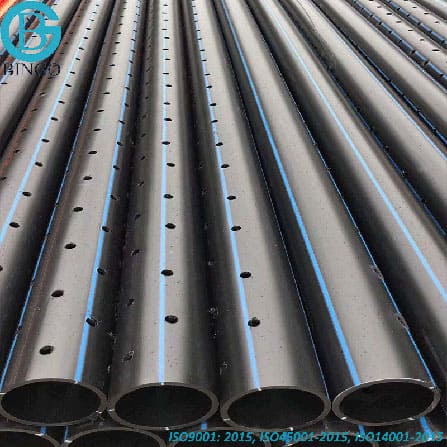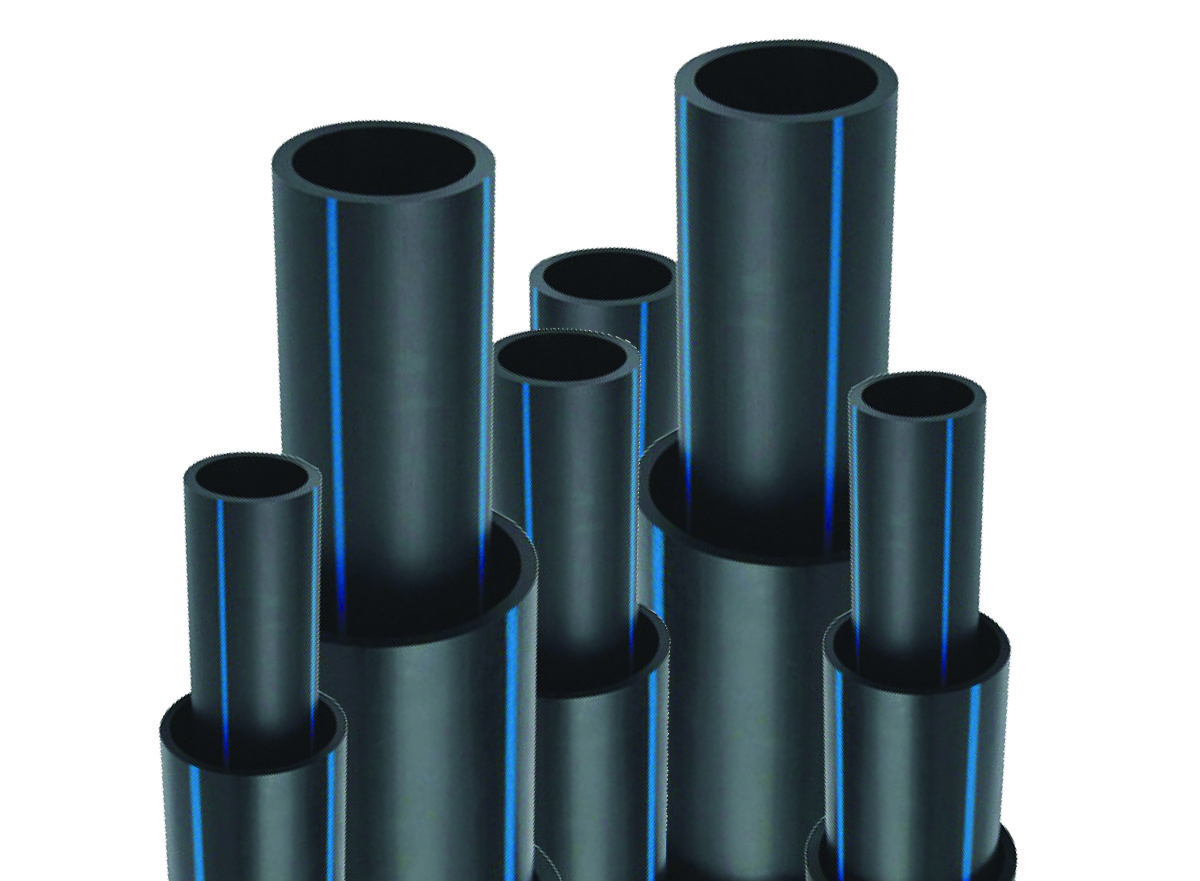custom hdpe pipe manufacturing Midland TX: Breakthroughs Shaping the Market
Wiki Article
Discover the Manufacturing Process Behind High-Quality HDPE Pipe and Its Applications
The production process of premium HDPE pipes is complex and methodical. It starts with the selection of basic materials that boost performance. Following this, ethylene goes through polymerization to form material, which is after that shaped through extrusion. Quality assurance is paramount, making sure that the end product meets stringent requirements. The journey of HDPE pipelines does not finish with manufacturing. Their applications across different sectors disclose a more comprehensive importance worth taking a look at.Understanding HDPE: Characteristics and Advantages

High-density polyethylene (HDPE) is a functional polycarbonate known for its durability and resistance to numerous ecological aspects. This material shows excellent tensile toughness, making it suitable for requiring applications. Its low-density framework adds to a light-weight item, assisting in ease of handling and installation. HDPE additionally showcases remarkable resistance to chemicals, which lessens destruction when exposed to extreme materials.
The material's low dampness absorption even more enhances its long life, making it optimal for usage in pipelines and tank. In addition, HDPE is resistant to ultraviolet (UV) radiation, guaranteeing that products preserve their integrity even when exposed to sunlight. Its flexibility enables for the production of elaborate forms without compromising stamina. The eco-friendly nature of HDPE, commonly stemmed from recycled products, includes in its appeal, promoting lasting practices in production. On the whole, these residential or commercial properties and benefits make HDPE a preferred selection for various commercial and consumer applications.
Resources Option for HDPE Manufacturing
The selection of resources for HDPE manufacturing is vital to verify the final product meets the desired requirements and top quality standards. High-density polyethylene (HDPE) is primarily produced from polymerized ethylene, stemmed from fossil gas such as all-natural gas or petroleum. The high quality of these feedstocks greatly affects the mechanical and thermal buildings of the final HDPE.Ingredients additionally play a considerable role in improving HDPE's performance, consisting of antioxidants, UV stabilizers, and colorants, which improve toughness and resistance to ecological elements. The choice process must think about not only the chemical structure of the raw products but additionally their processing features to assure efficient manufacturing.
The sourcing of raw products need to focus on sustainability and compliance with environmental policies, as liable techniques are important in today's market. Eventually, cautious basic material selection lays the foundation for producing high-quality HDPE pipelines appropriate for diverse applications.
The Extrusion Process: Shaping HDPE Pipe
The extrusion procedure plays a vital duty in shaping HDPE pipelines, starting with precise product preparation techniques that ensure excellent flow and consistency. Just as essential is the layout of the die, which directly affects the final measurements and surface area high quality of the pipe. Together, these factors contribute considerably to the effectiveness and quality of HDPE pipeline production.Material Prep Work Methods
Efficient manufacturing of HDPE pipelines starts with precise product preparation strategies, especially the extrusion procedure. During this stage, high-density polyethylene material is very first dried to get rid of dampness, ensuring ideal flow characteristics. The resin is then fed into the extruder, where it goes through heating and melting, transforming into a thick state. This home heating process is carefully regulated to preserve the product's integrity and efficiency. The liquified HDPE is compelled through a die, shaping it right into a continual pipe type. Appropriate temperature administration throughout extrusion is necessary, as it straight impacts the material's buildings and the final item quality. When shaped, the HDPE pipeline is cooled down and cut to defined lengths, all set trenchless water line replacement near me for succeeding processing and applications.Die Design Value
Accuracy in die style plays a necessary duty in the extrusion process of HDPE pipes. The die works as the final shaping device, straight affecting the pipeline's measurements, wall surface thickness, and surface area finish. A properly designed die guarantees uniform material flow, reducing defects such as abnormalities and weak areas. The geometry of the die need to be maximized to accommodate the certain buildings of HDPE, including its viscosity and thermal behavior throughout extrusion. In addition, the cooling rate of the product as it goes through the die can markedly influence the pipe's structural integrity. Consequently, investing in sophisticated die modern technology is important for manufacturers aiming to create premium HDPE pipes that satisfy industry criteria and customer expectations.Quality Control Steps in HDPE Manufacturing
Numerous factors influence the top quality of HDPE pipe production, efficient quality control measures are crucial to guarantee consistency and integrity in the final item (hdpe pipe in stock Midland TX). Key quality assurance techniques consist of rigorous material evaluation, validating that the raw polyethylene fulfills well established standards for purity and density. Throughout the extrusion procedure, criteria such as temperature, pressure, and cooling time are carefully monitored to preserve dimensional accuracy and architectural integrityAdditionally, post-production screening is essential; producers typically conduct hydrostatic examinations to analyze the pipeline's strength and resistance to pressure. Visual examinations for surface problems additionally improve high quality guarantee. Accreditation from pertinent requirements organizations, like ASTM or ISO, supplies an additional layer of trustworthiness. By carrying out these detailed top quality control measures, suppliers can decrease flaws, boost efficiency, and guarantee that the HDPE pipelines meet the certain needs of different applications, ultimately resulting in consumer contentment and count on the product.
Applications of HDPE Pipeline Throughout Industries
HDPE pipes are made use of throughout numerous fields as a result of their toughness and convenience. In water circulation systems, they assure reliable shipment, while in wastewater management, they offer reliable options for waste transport. Furthermore, farming watering networks gain from HDPE's resistance to corrosion and versatility, making it a suitable option for modern-day farming techniques.
Water Circulation Systems
A considerable variety of markets rely upon high-density polyethylene (HDPE) pipelines for reliable water circulation systems. Known for their durability and resistance to deterioration, HDPE pipelines are widely used in community supply of water networks, farming watering, and commercial applications. Their lightweight nature assists in easy handling and installment, minimizing labor costs and time. Furthermore, HDPE pipes can fit numerous pressure degrees, making them appropriate for both reduced and high-pressure systems. hdpe pipe suppliers Midland TX. The adaptability of the product allows for seamless combination right into existing infrastructure, reducing the demand for considerable excavation. HDPE's resistance to chemical leaching assurances that the water provided stays safe and tidy, making it an optimal choice for keeping the quality of safe and clean water across various fields.Wastewater Management Solutions
Effective water distribution systems also pave the method for ingenious wastewater management services, where high-density polyethylene (HDPE) pipelines play a significant duty. Renowned for their longevity and resistance to deterioration, HDPE pipelines are perfect for delivering wastewater in numerous setups. Their versatility permits simple installment in complicated settings, reducing the demand for substantial excavation. Furthermore, HDPE's smooth interior surface area reduces friction, improving circulation rates and performance. These pipelines are also resistant to explanation chemical leaching, making certain that pollutants do not compromise the surrounding environment. Industries, communities, and therapy centers significantly rely on HDPE pipes for their dependability and durability, making them a recommended selection for contemporary wastewater administration systems. This adaptability emphasizes the essential relevance of HDPE pipes throughout many applications.Agricultural Watering Networks
Agricultural irrigation networks benefit greatly from making use of high-density polyethylene (HDPE) pipes, which provide efficient and trustworthy water distribution to plants. HDPE pipelines are light-weight, making them simple to transport and install, while their adaptability enables for various setups in diverse surfaces. These pipelines show exceptional resistance to corrosion, chemicals, and UV radiation, ensuring toughness in rough farming settings. Furthermore, their smooth indoor surface lessens rubbing loss, enhancing water flow and reducing power prices linked with pumping. The durability of HDPE pipes, usually exceeding 50 years, adds to reduce maintenance and substitute costs. Farmers increasingly count on HDPE pipelines to boost irrigation efficiency and advertise lasting agricultural techniques, ultimately leading to boosted crop returns and source conservation.
Future Fads in HDPE Pipeline Innovation
As the need for sustainable and reliable framework expands, advancements in HDPE pipeline modern technology are poised to transform different markets. Emerging fads consist of the combination of smart technologies, such as sensing units and IoT capacities, which promote real-time monitoring of pipeline problems, minimizing upkeep expenses and avoiding leakages. Furthermore, the development of innovative manufacturing techniques, such as 3D printing, is enabling the manufacturing of complicated, personalized pipe styles that accommodate particular job requirements.The focus on recycling and round economic situation methods is driving the technology of HDPE pipelines made from recycled products, improving sustainability. Improved jointing techniques, such as electro-fusion and mechanical installations, are additionally enhancing installment performance and reliability. The expanding focus on ecological laws is pressing suppliers to adopt greener production procedures, ensuring that HDPE pipelines not just meet market standards yet also cultivate an even more sustainable future for facilities development.
Often Asked Inquiries
Just How Does HDPE Compare to Various Other Plastic Materials?
HDPE exceeds many other plastic materials regarding sturdiness, chemical resistance, and versatility. Its low thickness and high tensile strength make it ideal for numerous applications, often going beyond options in both performance and longevity.What Are the Ecological Effects of HDPE Production?
The environmental influences of HDPE production include greenhouse gas discharges, power intake, and possible contamination from making processes. Furthermore, improper disposal can cause dirt and water contamination, elevating issues about long-term ecological impacts.Can HDPE Pipeline Be Recycled?
Yes, HDPE pipes can be reused. Lots of facilities accept made use of HDPE for processing, transforming it right into new items. This recycling adds to sustainability efforts, decreasing plastic waste while conserving sources and energy in the manufacturing cycle.What Is the Lifespan of HDPE Piping?

How Do Temperature Level Variants Impact HDPE Pipeline Performance?
Temperature variants substantially impact HDPE pipe efficiency, impacting flexibility and strength. High browse around this web-site temperatures can bring about softening, while reduced temperatures may trigger brittleness, inevitably affecting the pipeline's longevity and viability for different applications in diverse atmospheres.Report this wiki page